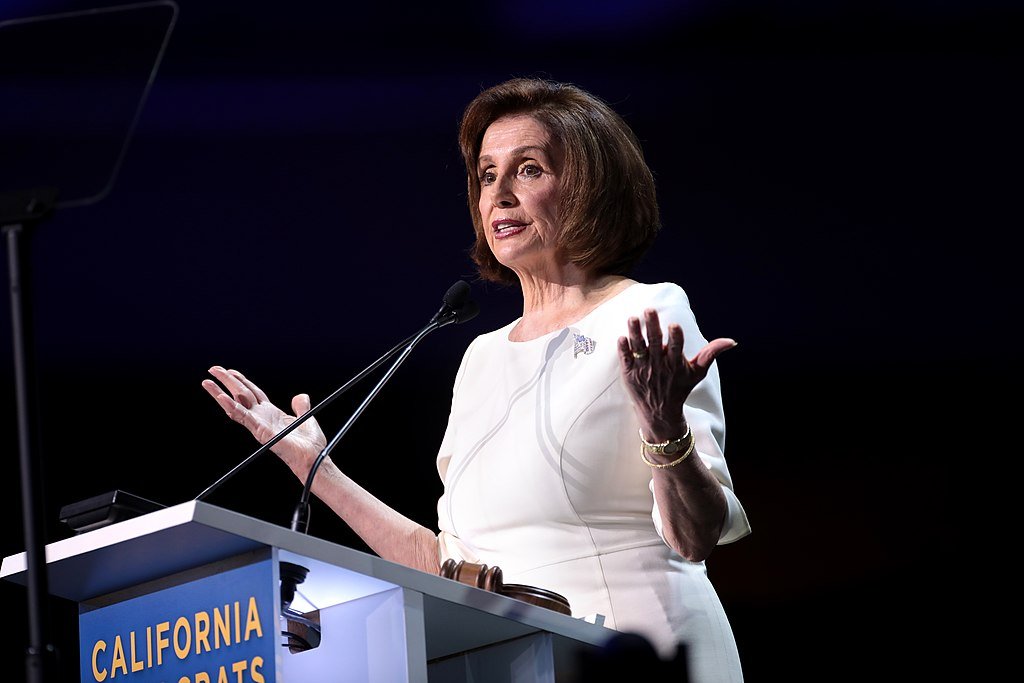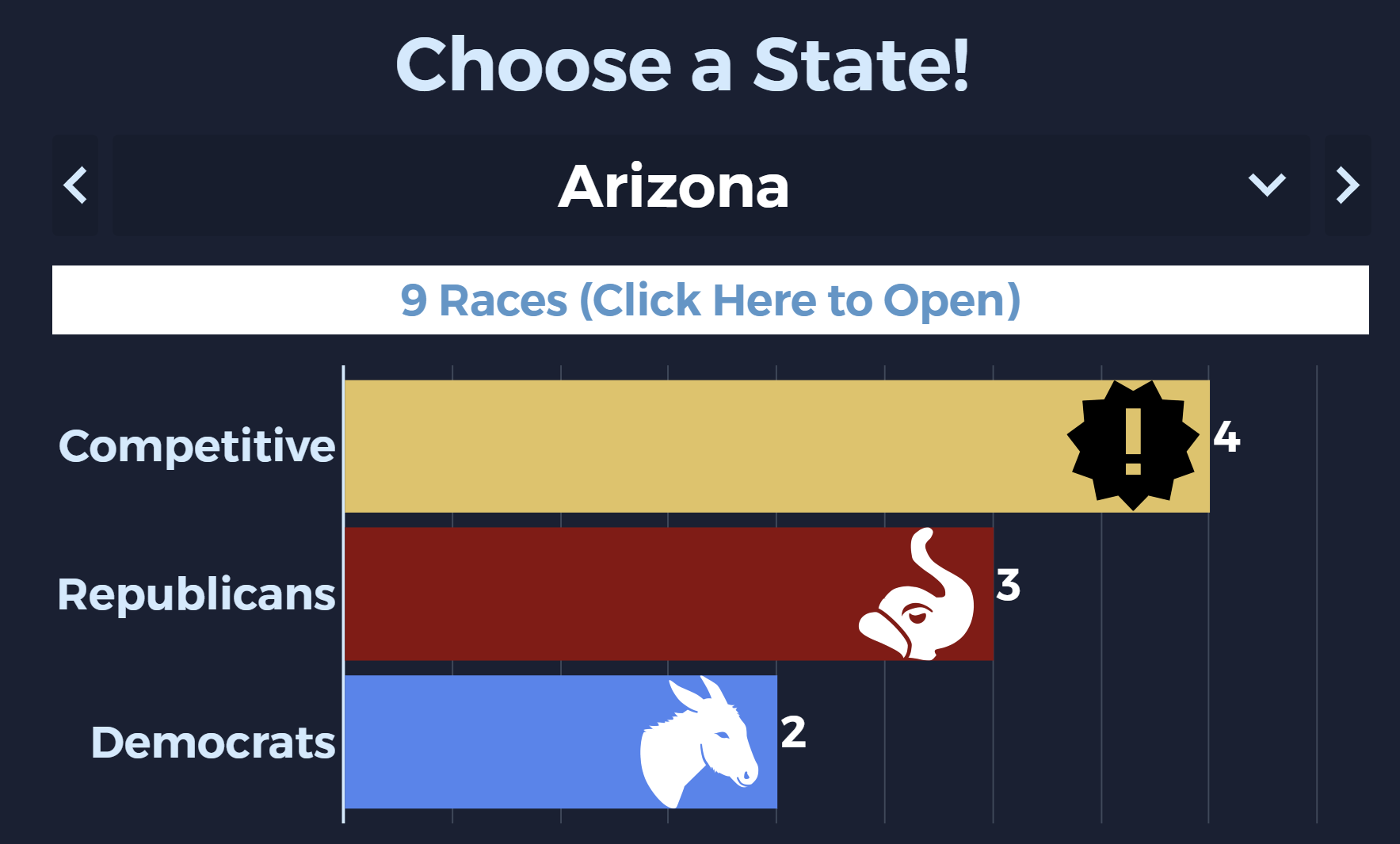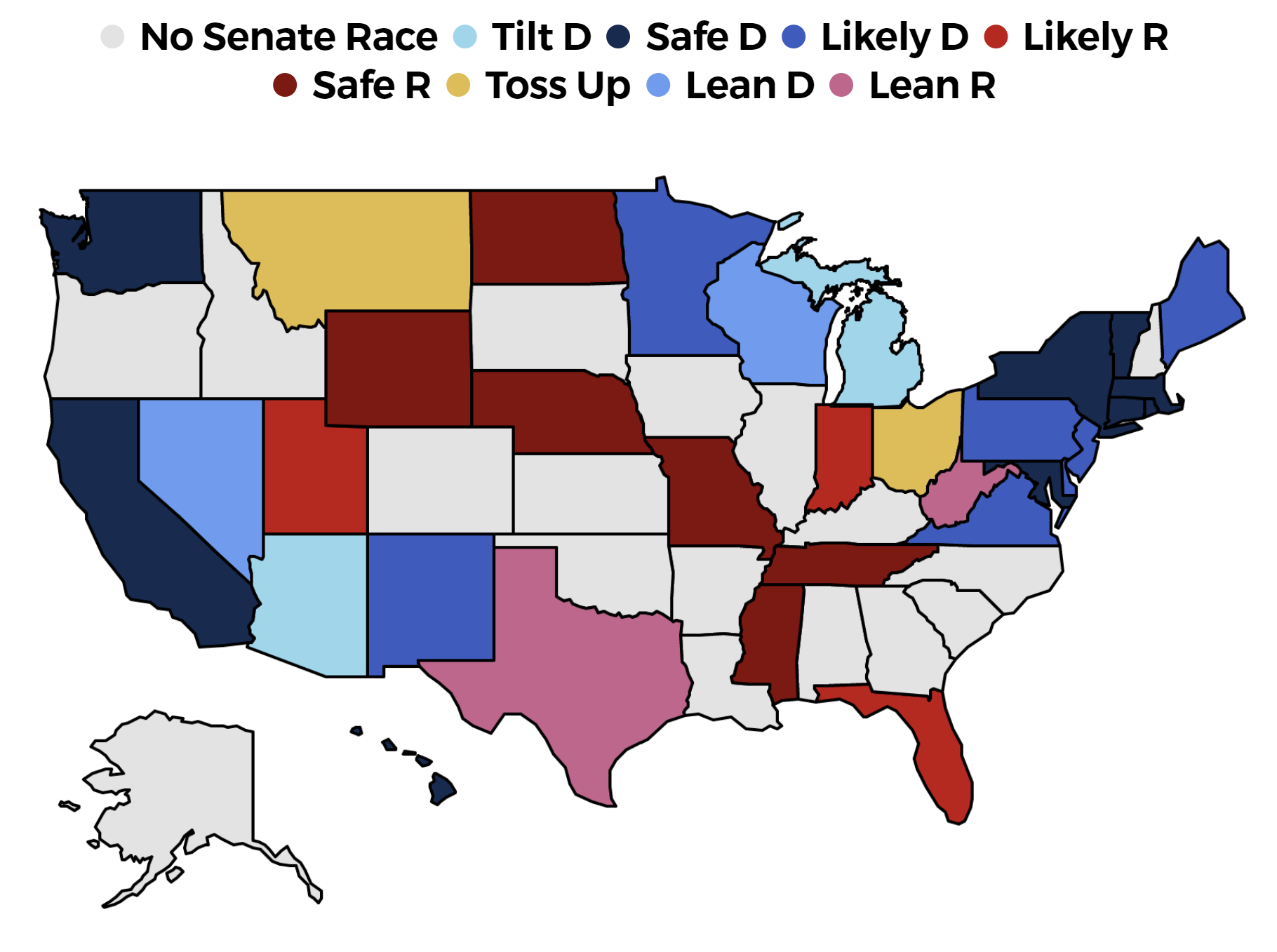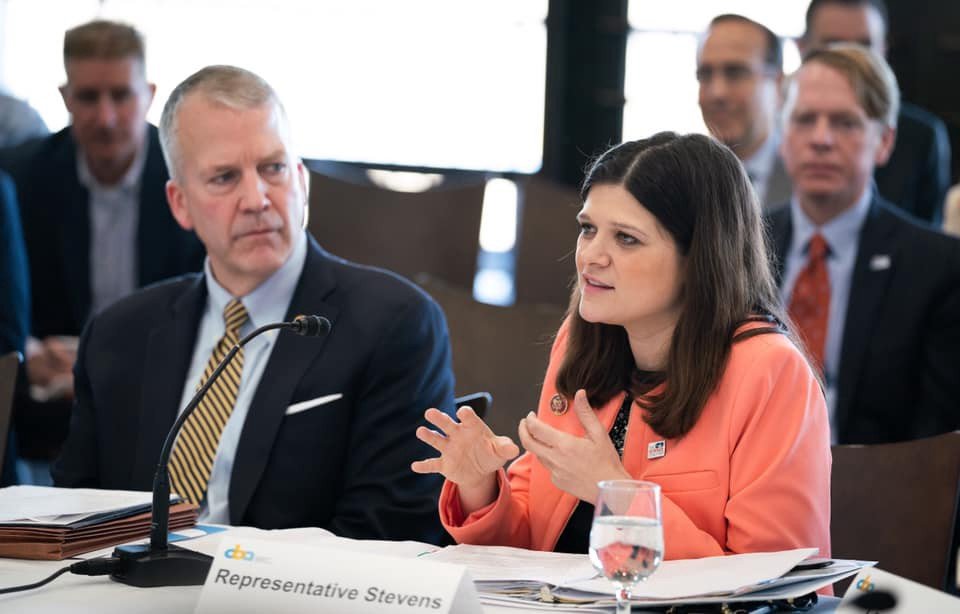The House Just Became Much More Competitive
Photo credit: Gage Skidmore
By: Logan Phillips
Date: August 24th
Democrats just won a blockbuster victory in New York, providing the latest sign that the political battleground has shifted since the Supreme Court’s decision to overturn Roe v. Wade. In the immediate aftermath of that decision in June, we warned: “Overturning Roe v. Wade has been the white whale for the Republican party for over a generation, and it has powered them to victory time and time again. Now that they are on the precipice of reaching their goal, there could be a steep political price to pay.”
All indications are that the national environment has become much more competitive. Democrats have zoomed past Republicans to take the narrow lead in the national generic ballot. Our RacetotheWH polling average had Republicans leading by 2.6% before the Court’s imminent decision leaked back in May.
That’s a sharp reversal of expectations. History suggest that party out of the White House should be gaining the closer we get to election day.
Just as importantly, the polling has been echoed by a series of surprisingly strong Democratic performances in special elections. It started with a Congressional election in late June to replace Nebraska Rep. Jeff Fortenberry. Republicans typically rule the roost in the Nebraska 1st, a district containing both rural counties and the Omaha suburbs. Just two years ago, Donald Trump outpaced Joe Biden in the NE-01 by 15%. In 2022, Republican Mike Flood faced a surprisingly close contest, and only beat Democrat Patty Pansing Brooks by just 5% despite outspending her by more than two to one.
Republicans had a bad case of déjà vu in early August in another special Congressional election - this time in rural Southern Minnesota. Trump had won the MN-01 by 10%, and Republican Brad Finstread looked poised to do the same after polls showed him up 8-10%. Instead, Hormel Foods CEO Jeff Ettinger gave him a run for his money, only losing by a far too close for comfort 4.2%.
The most consequential blow was in a ruby-red Kansas referendum on abortion - the first of its kind since the Court overturned Roe. Voters were asked whether to grant the GOP-controlled state legislature the power to restrict access to abortion. Republicans had long won elections in Kansas by playing up pro-life politics, and polling showed the referendum winning by 4%. Instead, it was defeated by overwhelming odds thanks to a combination of remarkably strong Democratic turnout and a large swath of Republicans voting against their party's stance on abortion. The measure was defeated 59% to 41%.
The icing on the cake for Democrats came in a twin pair of New York Congressional elections on August 23rd. In the NY 23rd, Democrats once again excelled in a Republican rural district - cutting Trump’s 11% win in 2020 to a just 6.5% win for the GOP in 2022.
The real test was in the NY-19th. This was a district that Republicans should win in a neutral to right-leaning cycle - but it was competitive enough for Democrats to take if they could mount yet another strong performance. The challenge was that Republicans recruited an all-star recruit in Marcus Molinaro. Molinaro is a moderate with a record of outrunning his party. With context, his failed run for Governor in 2018 was remarkable, because while he lost by 23% amidst a historic blue wave, he outperformed Congressional Republicans in the state by 13% against a formidable Democratic incumbent. Notably, Molinaro won the NY-19th by double digits in that race.
Pat Ryan tried to make this election a referendum on abortion. If it worked, it would be bad news for Republicans, because Molinaro had mostly avoided talking about the issue of abortion. This was a test of whether such a strategy could work against an opponent that couldn’t be attacked for taking positions well outside the mainstream. The gamble worked for Pat Ryan, and he emerged victorious, winning his seat by more than 2%.
Two key patterns emerge from these special elections. First, Democrats outperformed Biden in every one of these races, by an average of around 5.4%. Joe Biden won the popular vote by 4.4%, so nationally, that would translate to a near 10% lead for Democrats in the popular vote. I want to be clear - we are not predicting anything like that on election day. Special elections often have low turnout, and the more motivated party will overperform at a rate unsustainable on election day. Moreover, college-educated voters a core part of the Democrats' coalition. They turn out at higher rates during unusually timed elections. Nonetheless, Democrats’ performance has been consistently excellent in these special elections.
The second pattern is that the polling has consistently underrated Democrats. In two of the last three cycles, we’ve seen polling misses of historic proportions underestimating Republican support. It was natural to assume that Republicans were more likely to be underrated than Democrats - but we can’t rule out the possibility that pollsters may end up overcorrecting for their past mistakes in 2022.
These two patterns have forced us to reconsider our assumptions about the national environment in 2022. In our House Forecast, we anticipated that Republicans were going to gain more support in the national generic ballot. That was an assumption built on decades of past midterm elections where the party out of the White House typically wins by big margins. Now, we still suspect that Republicans will more likely than not regain some of their support, it’s a real possibility that the popular vote is up for grabs in 2022.
For now, we downgraded our projection for the popular vote from R+2.1% to R+1.1%. That projection had already dropped on its own over the last few months thanks to Republicans' losses in the national generic ballot.
Our 2022 House Election Forecast still consider Republicans the favorites to win the House, but their edge is no longer nearly as decisive. Democrats' chance of an upset has risen from 27% to 34% over the last week.
The new national projection has implications for races across the country. We have 16 new ratings, most of which are favorable for Democrats. To learn more about each race, click the hyperlink to go to that State's House Race Predictions.
FL-10: Likely D ->Safe D
FL-14: Likely D -> Safe D
FL-22: Safe D -> Likely D
IN-01: Tossup -> Tilt D
NH-02: Tilt D -> Lean D
NM-02: Tilt R -> Toss Up
MI-10: Lean R -> Tilt R
NY-4: Tilt D -> Lean D
NY-18: Toss Up -> Tilt D
NY-19: Tilt R -> Tossup
NY-22: Tossup -> Tilt D
NY-23: Lean R -> Likely R
PA-07: Tilt R -> Tossup
TN-05: Likely R -> Lean R
VA-05: Safe R -> Likely R
WA-08: Tossup -> Tilt D
House 2022 Election Predictions
Read our full predictions for the National House - with a new option to find which states have the most competitive races. It also serves as a launching pad to read our full state predictions!
Race to the WH Articles
NFL Forecast
Our new data-driven predictions for the NFL Season!
Joe Biden Approval Rating Map
Biden’s approval rating - with a Map Showing his Support in Every State































